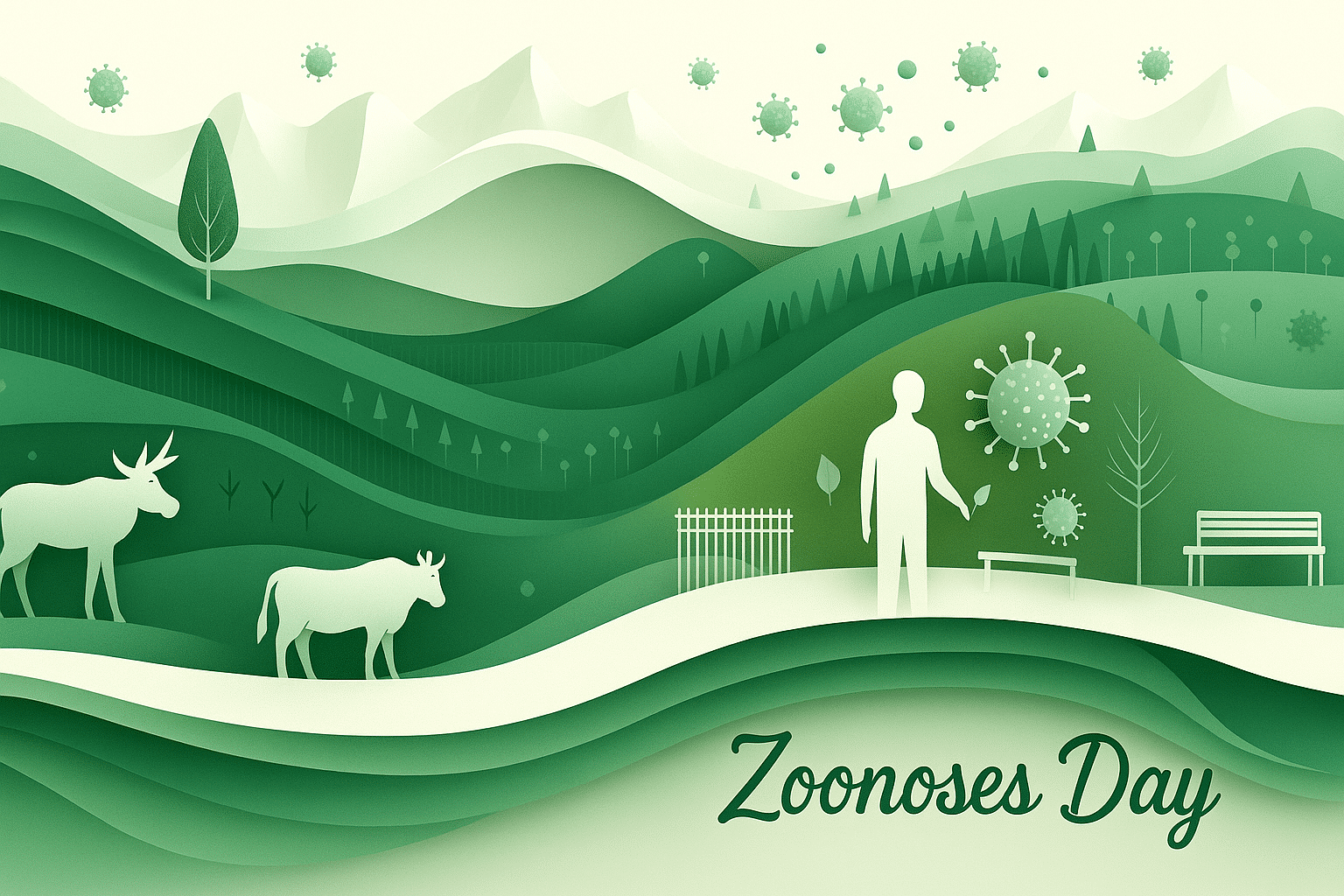What is World Zoonoses Day?
World Zoonoses Day is held every year on July 6 and is celebrated worldwide. The day raises awareness about zoonotic diseases, which are infections that can be transmitted between animals and humans. It marks the anniversary of the first successful rabies vaccination in 1885 by Louis Pasteur, a breakthrough moment in medical history.
Zoonotic diseases include illnesses such as rabies, avian influenza, and Lyme disease. Many of these infections emerge from close contact between humans and animals, often in agriculture, wildlife trade, or urban environments. World Zoonoses Day reminds us of the importance of prevention, early detection, and coordinated health strategies.
The day promotes the “One Health” approach, which sees human, animal, and environmental health as connected. It brings together researchers, veterinarians, public health professionals, and everyday citizens in a united effort to reduce disease risks.
History and Origin
On July 6, 1885, French scientist Louis Pasteur administered the world’s first successful rabies vaccine to a young boy who had been bitten by a rabid dog. The treatment saved the boy’s life and opened the door for future vaccines and control strategies against zoonotic diseases.
In the years that followed, rabies control programs expanded globally, and attention grew around the broader category of zoonoses. The emergence of new diseases like Ebola, SARS, and COVID-19 brought renewed urgency to this issue. World Zoonoses Day honors Pasteur’s breakthrough while urging modern societies to take prevention seriously.
The day has become an opportunity to educate communities, encourage vaccination programs, and promote hygienic practices around animals. It also supports research and global collaboration to prepare for future outbreaks.
Who participates in World Zoonoses Day?
- Public health agencies: National and global organizations share knowledge and coordinate responses to zoonotic threats.
- Veterinary experts: Veterinarians help detect and manage diseases in animal populations to prevent spread to humans.
- Scientists and researchers: Experts study how diseases jump between species and develop strategies to block that transmission.
- Schools and educators: Teachers introduce students to zoonoses and environmental health through interactive lessons.
- Citizens: Everyday people get involved by learning about risks and applying basic health and hygiene practices.
Slogans and Themes
Slogans like “One World, One Health,” “Prevent Zoonoses, Protect Lives,” and “Stay Safe, Stay Informed” are often used on this day. The main themes include cross-sector cooperation, vaccination, responsible animal care, and disease prevention. The focus lies on awareness, not alarm;helping people take informed action to protect both themselves and the environment.
Colors, Symbols, and Patterns
Colors
- Red: Represents urgency and the need for immediate response to outbreaks.
- Green: Stands for environmental health and sustainability.
- Blue: Reflects science, medicine, and public trust.
Symbols
- Globe: Represents the worldwide reach of zoonotic diseases.
- Animal silhouettes: Highlight the role of animals in disease transmission.
- Interlinked circles: Symbolize the connected health of people, animals, and ecosystems.
Patterns
- Network webs: Show how diseases can spread across regions and species.
- Footprints: Indicate the movement of animals, often linked to outbreaks.
- DNA strands: Reflect the scientific understanding needed to manage these diseases.
Most Used Hashtags
- #WorldZoonosesDay
- #OneHealth
- #ZoonoticDiseases
- #PreventZoonoses
- #GlobalHealth
How do you celebrate World Zoonoses Day?
- Attend health webinars: Join online sessions with experts in animal and human health.
- Share useful content: Post facts, infographics, or videos about zoonoses and how to prevent them.
- Support vaccination: Encourage rabies vaccinations for pets and other veterinary health measures.
- Practice hygiene: Wash hands after animal contact and keep food areas clean and safe.
- Talk to your community: Raise awareness through local events, school projects, or group discussions.
Why is World Zoonoses Day important?
World Zoonoses Day is important because over 60 percent of all emerging infectious diseases come from animals. These illnesses can be deadly and disruptive, but most are preventable. This day helps raise awareness, spark conversation, and push for better cooperation between sectors. From farmers and vets to doctors and parents, everyone has a role to play. A healthier planet means better outcomes for both people and animals.
Features
July 6: Zoonoses Day
Why do you keep falling for the same type?
Read the article Lovemaps: the hidden blueprint of our love.

